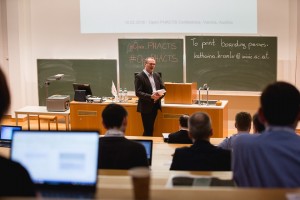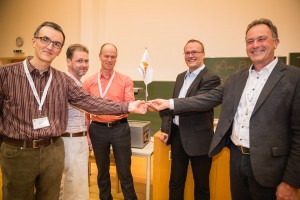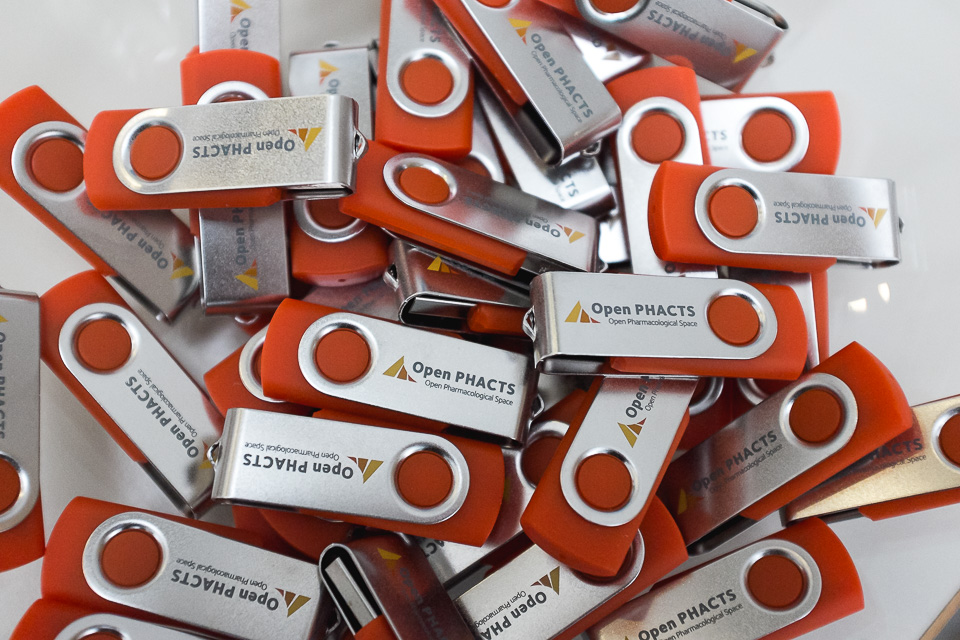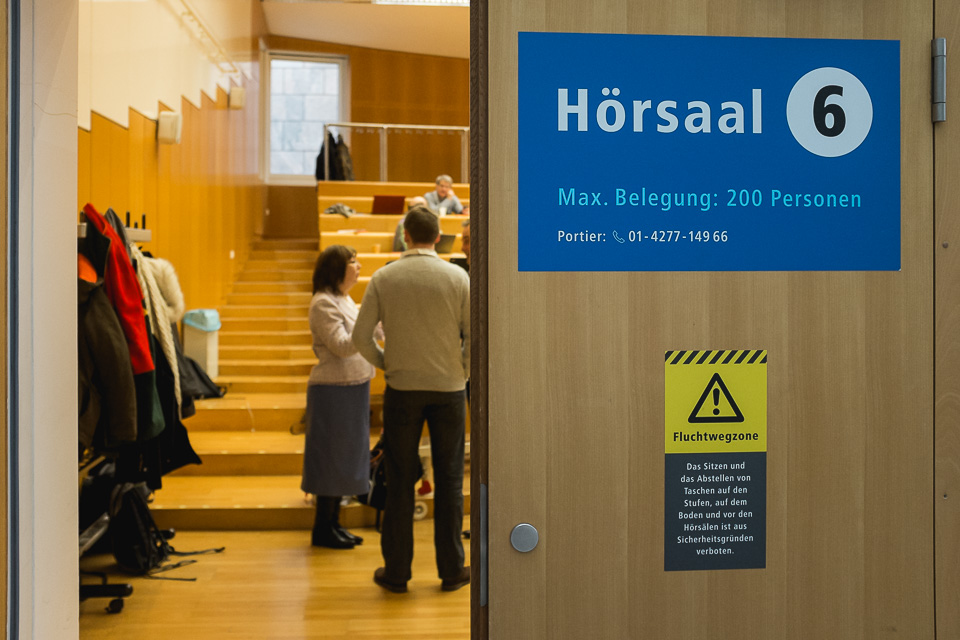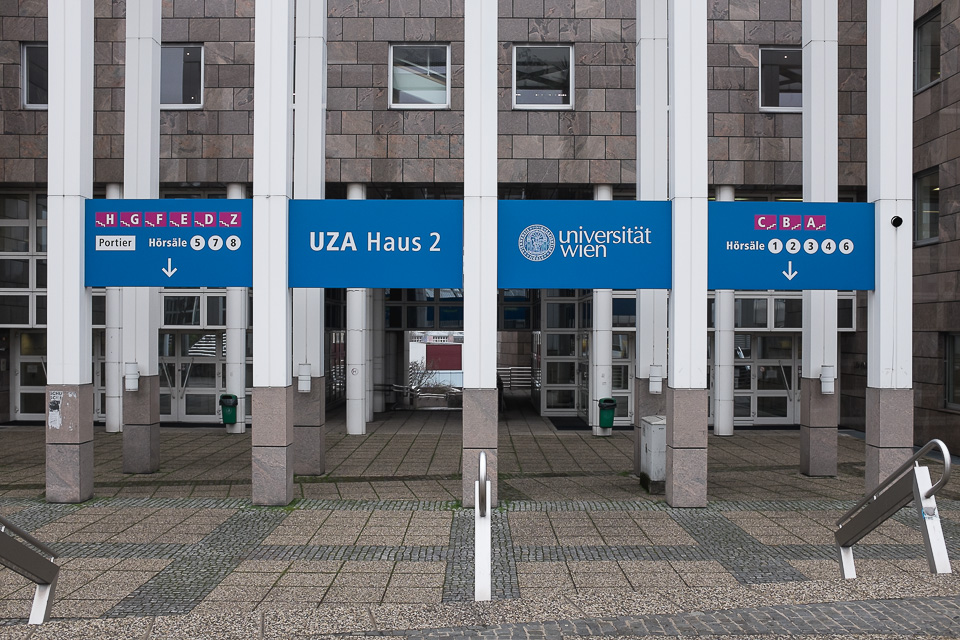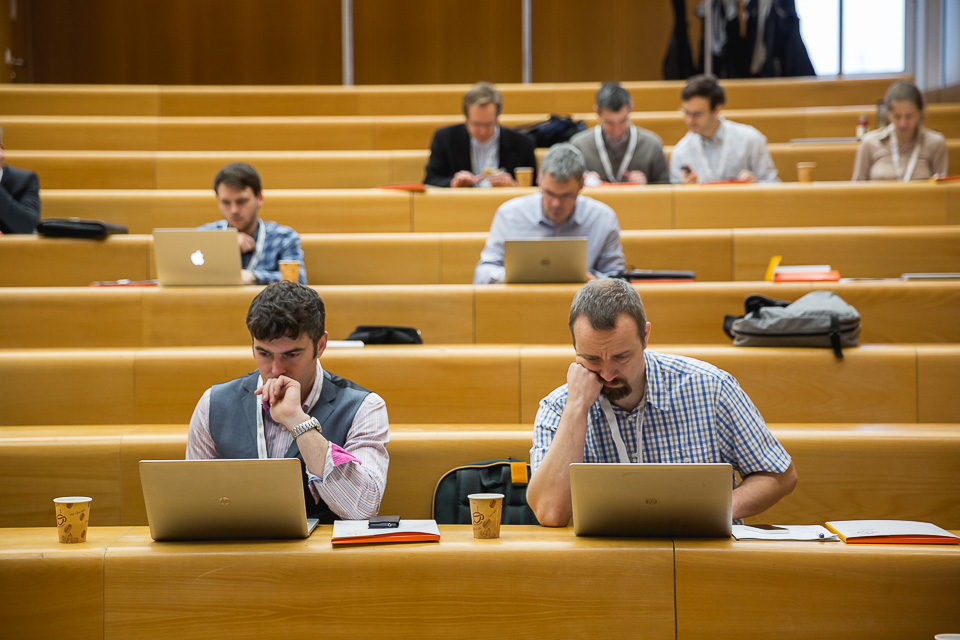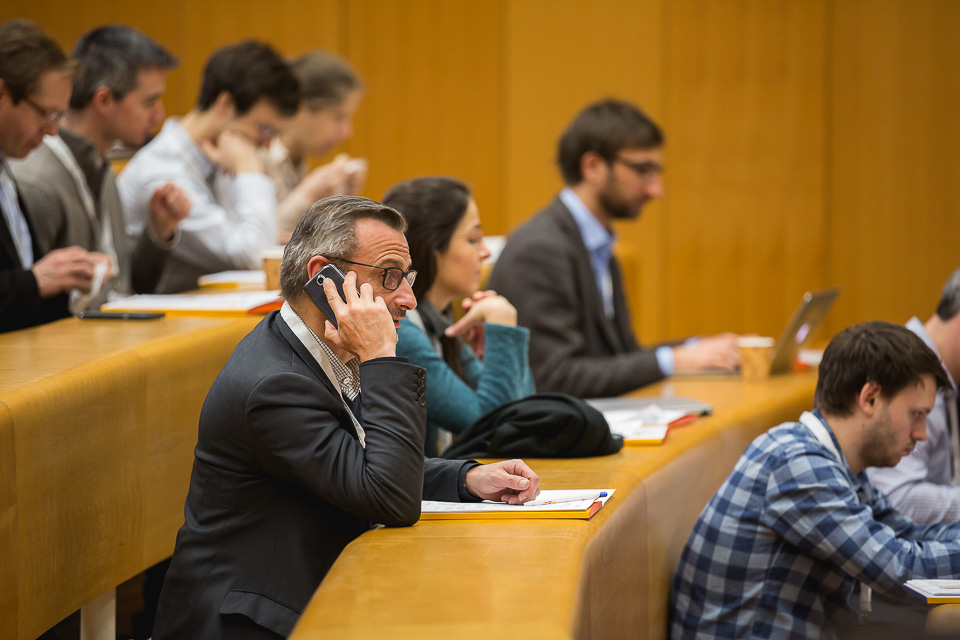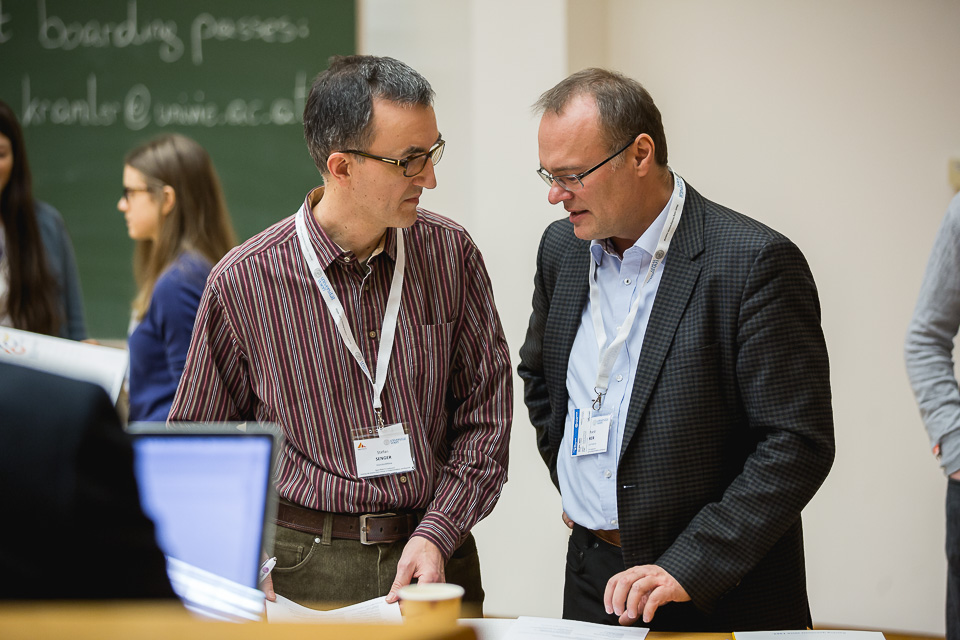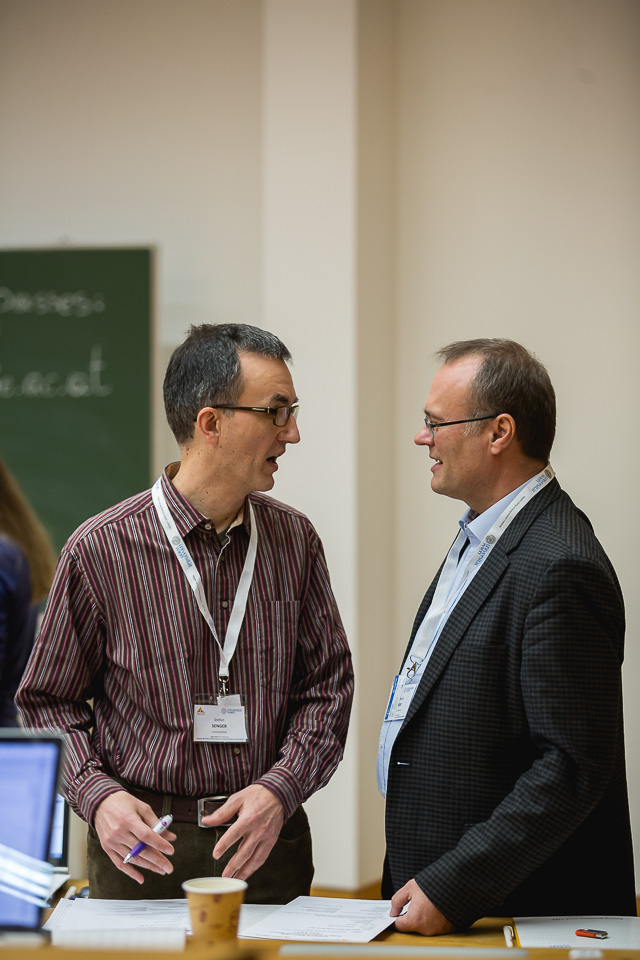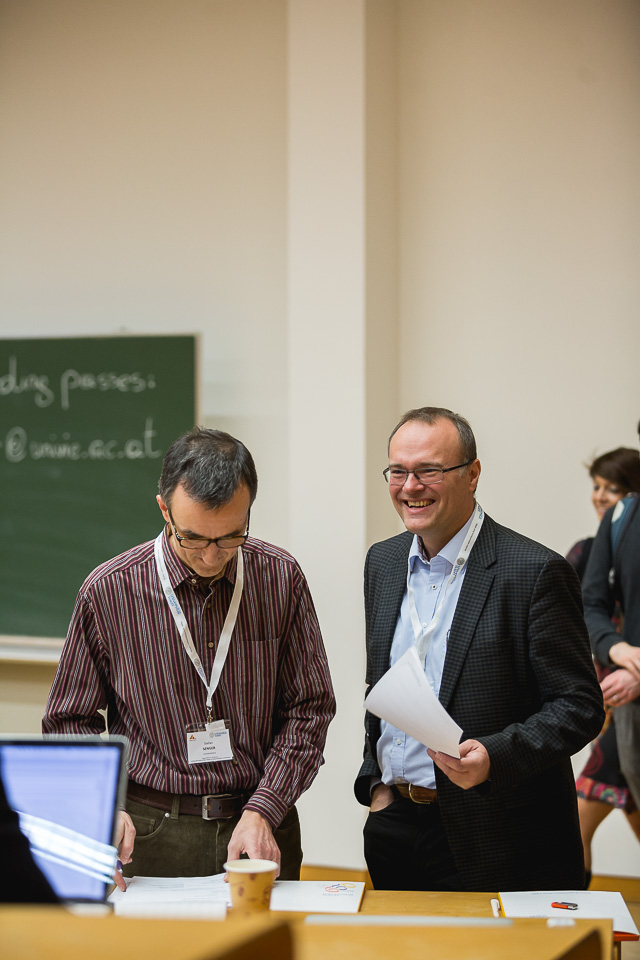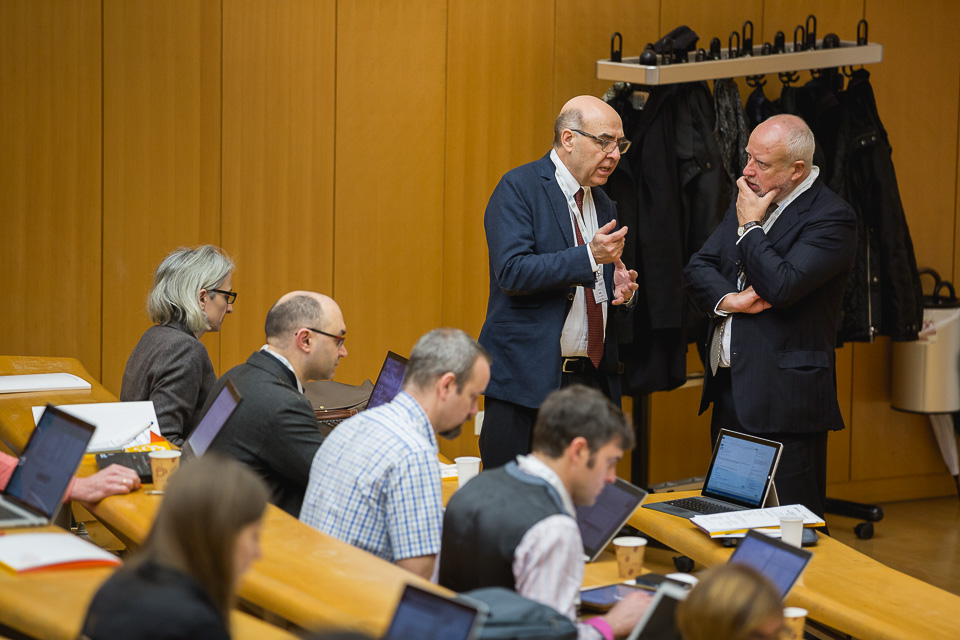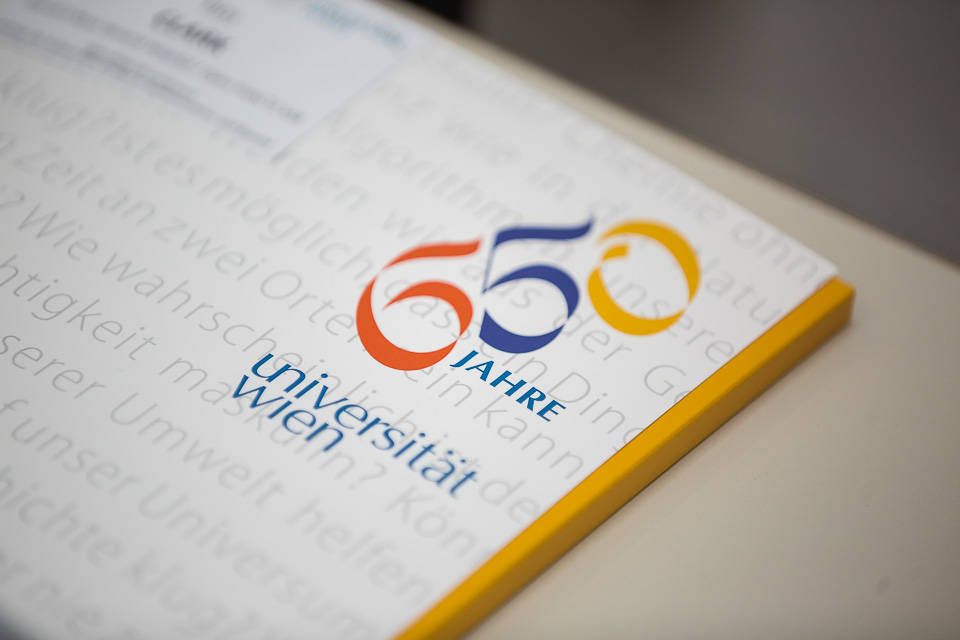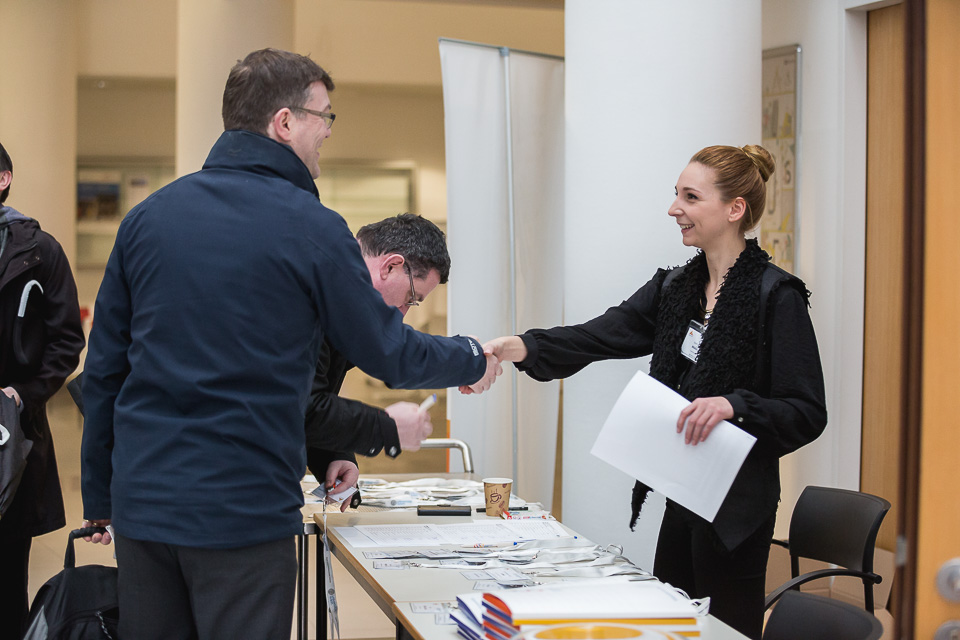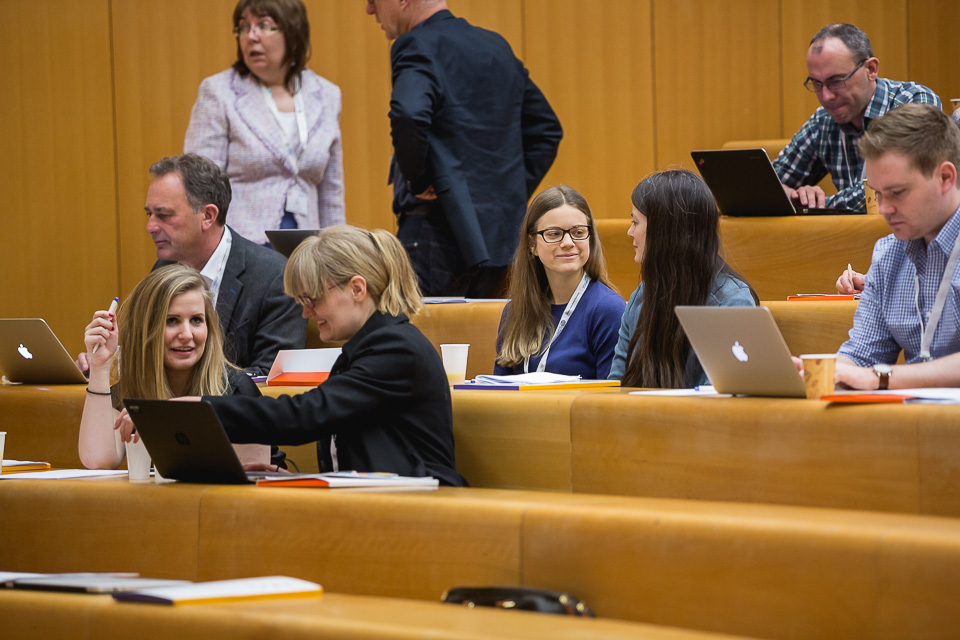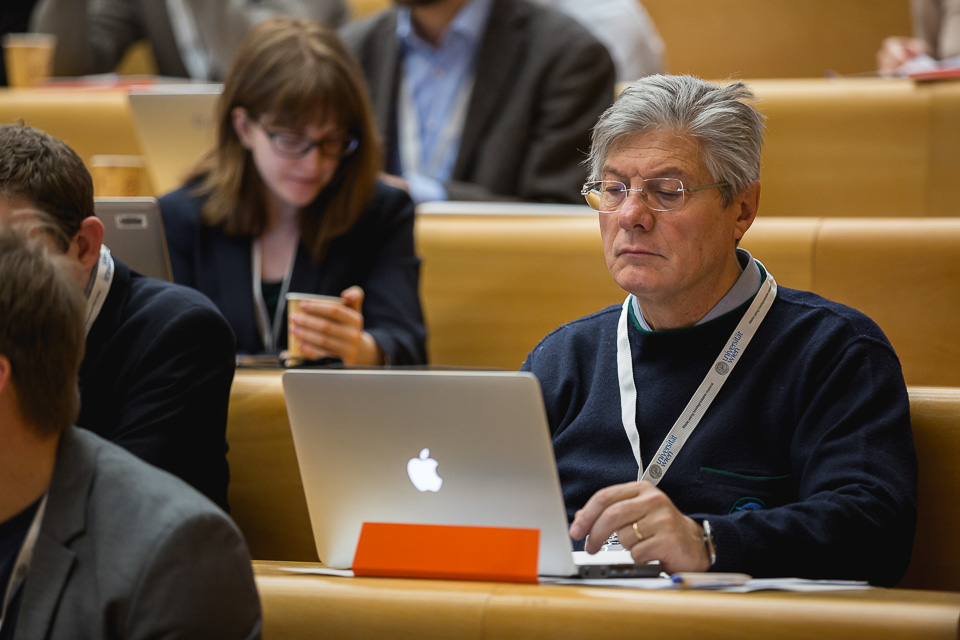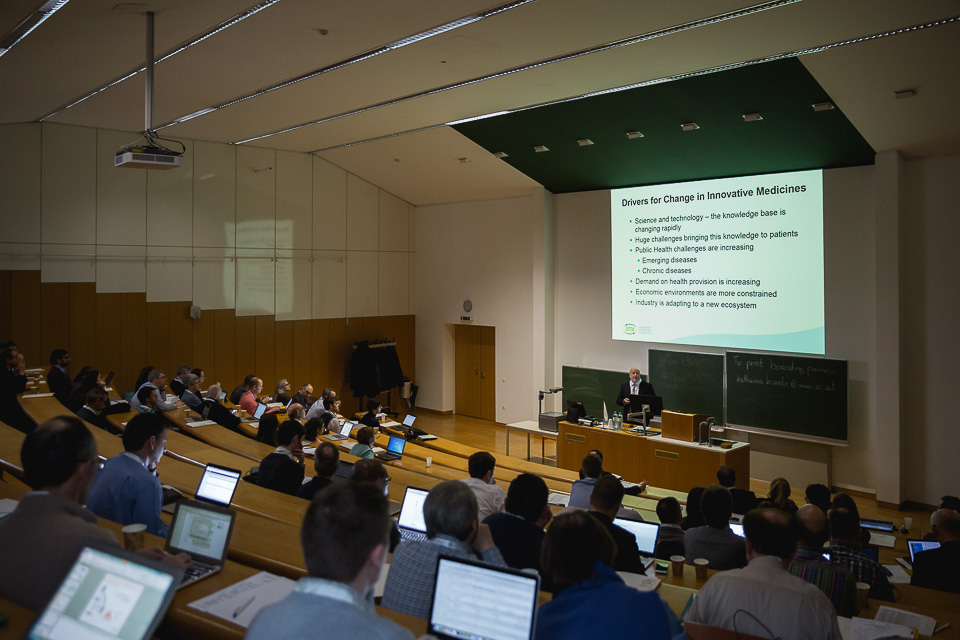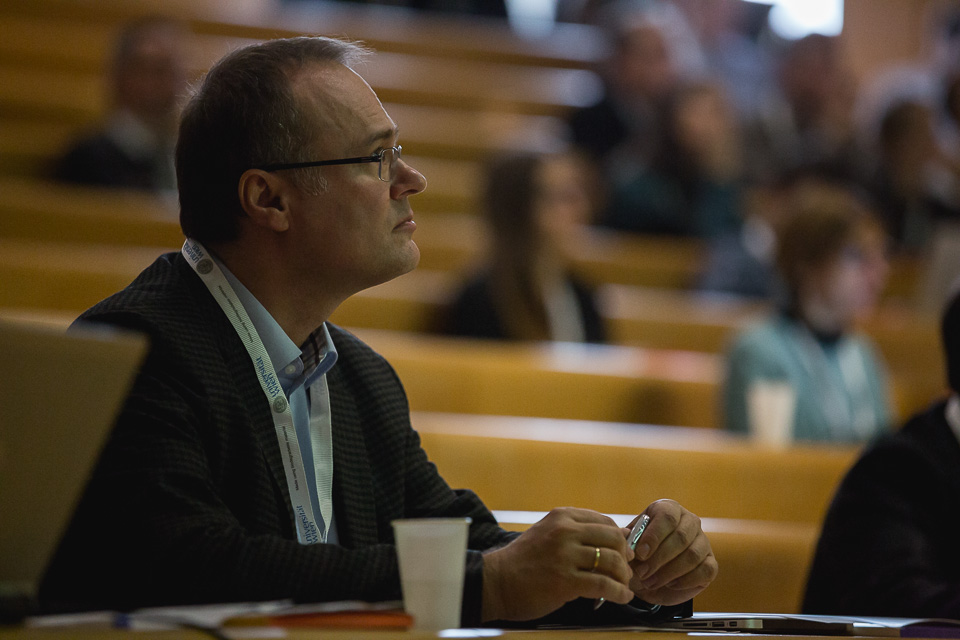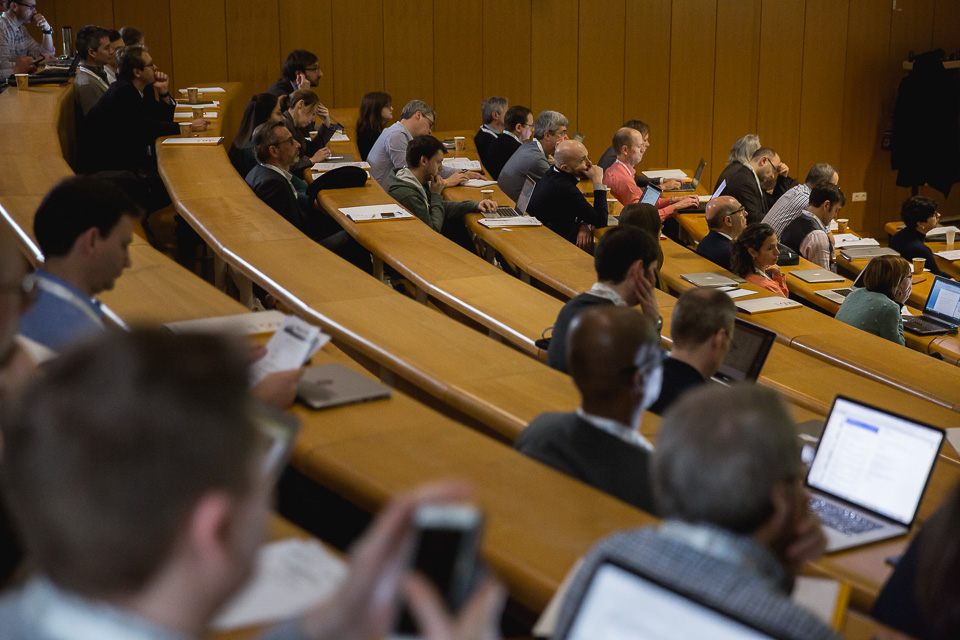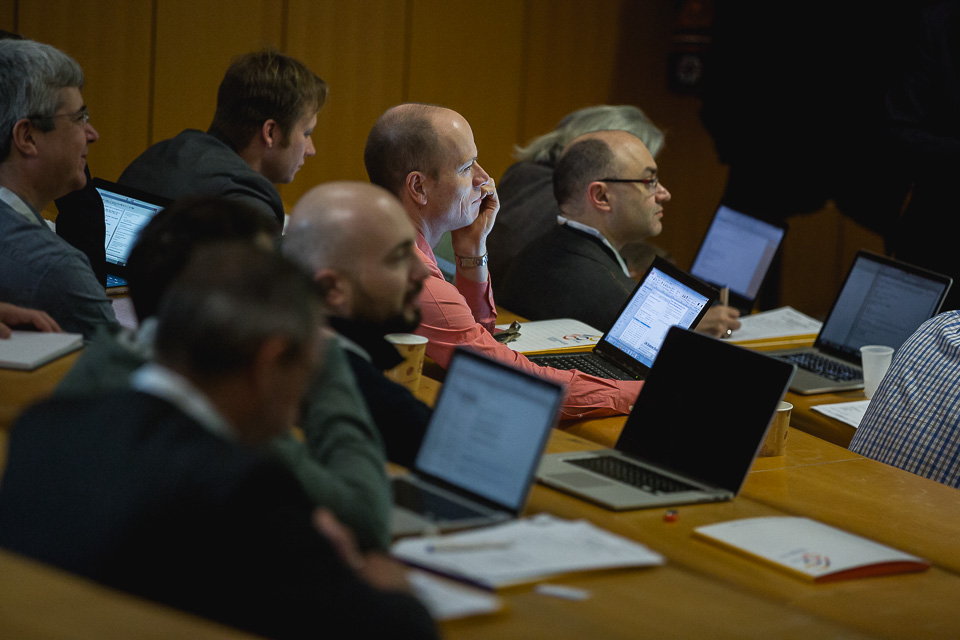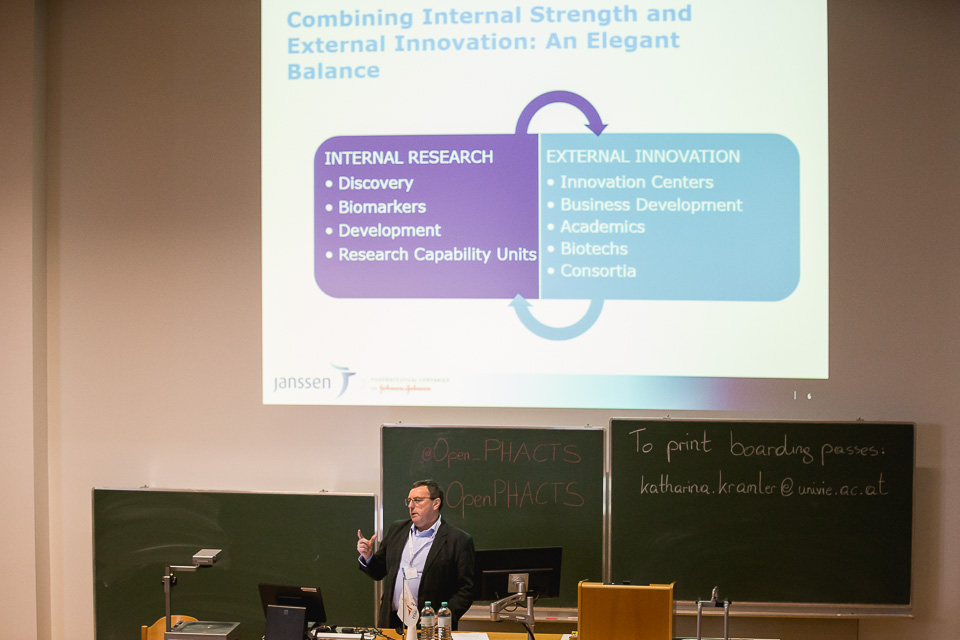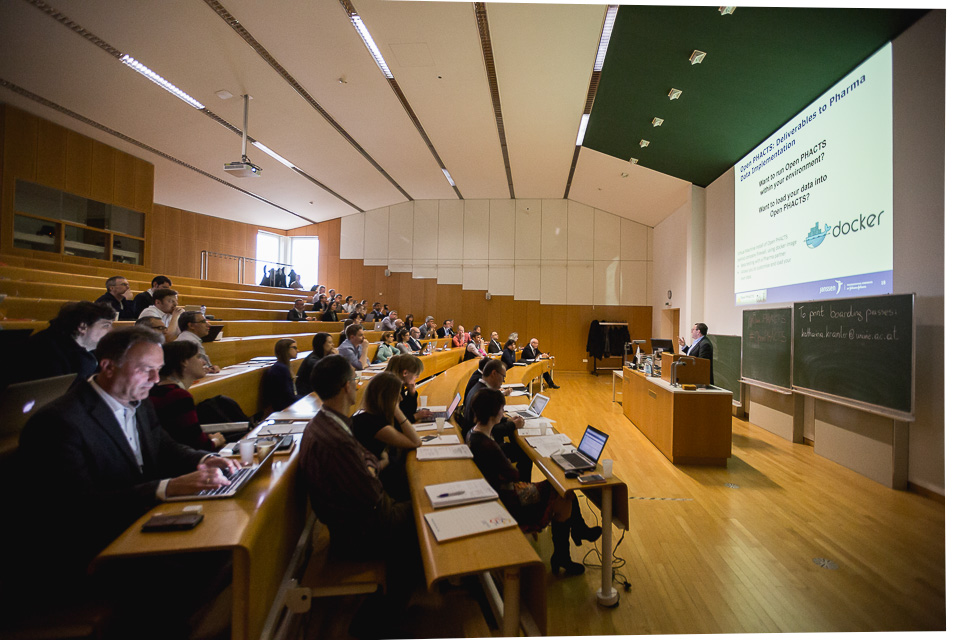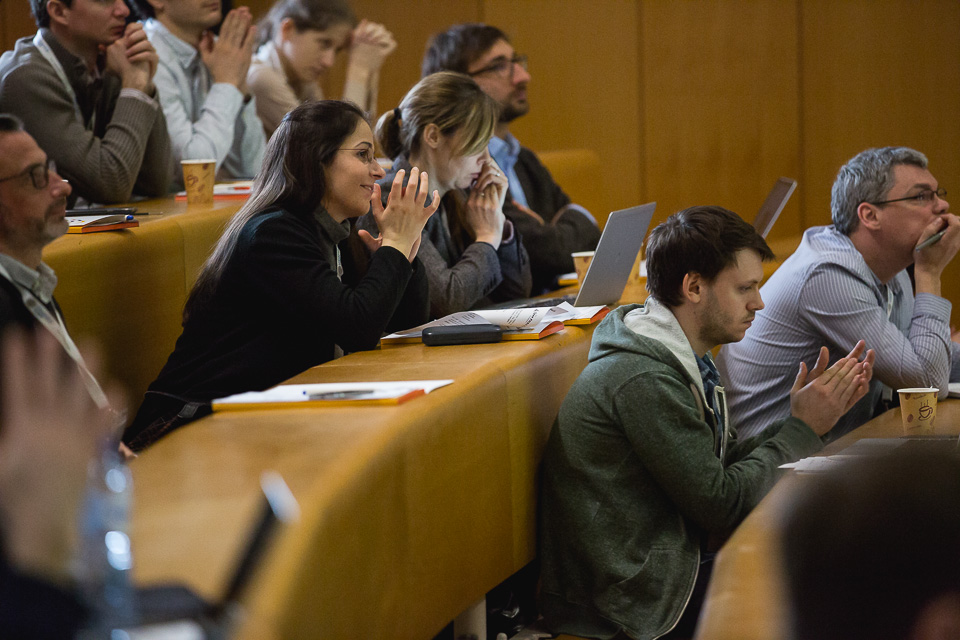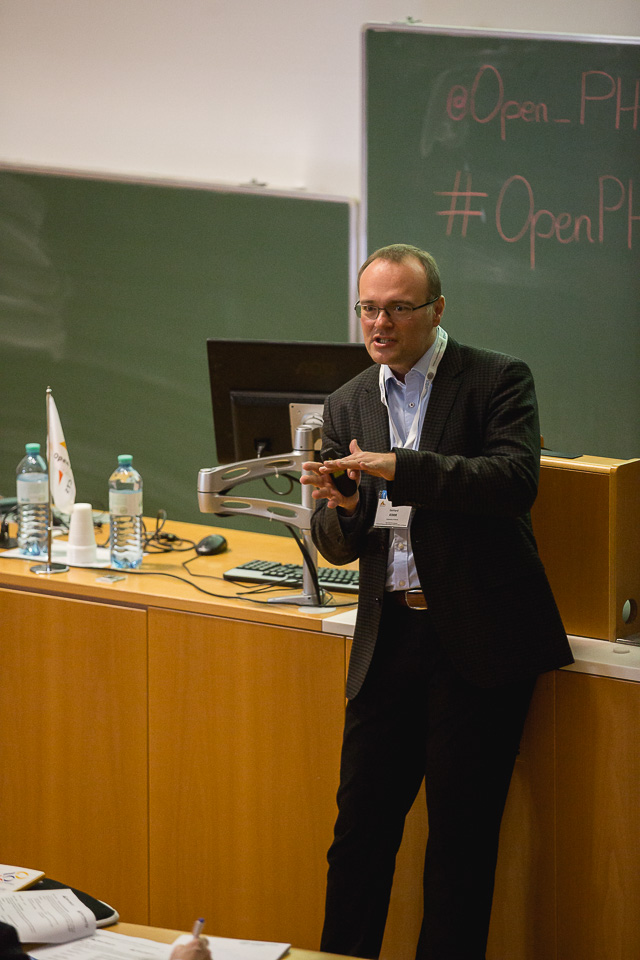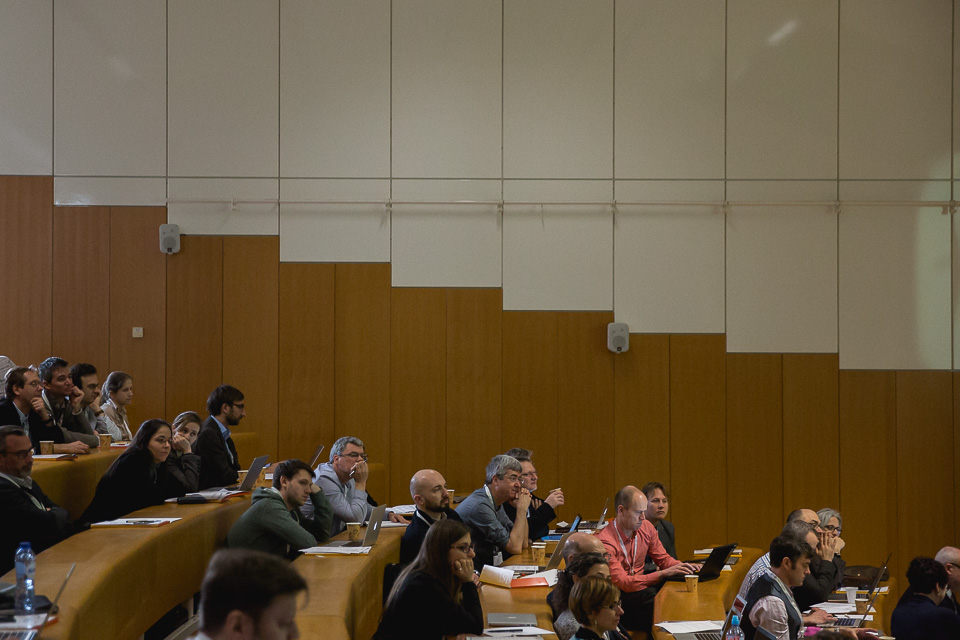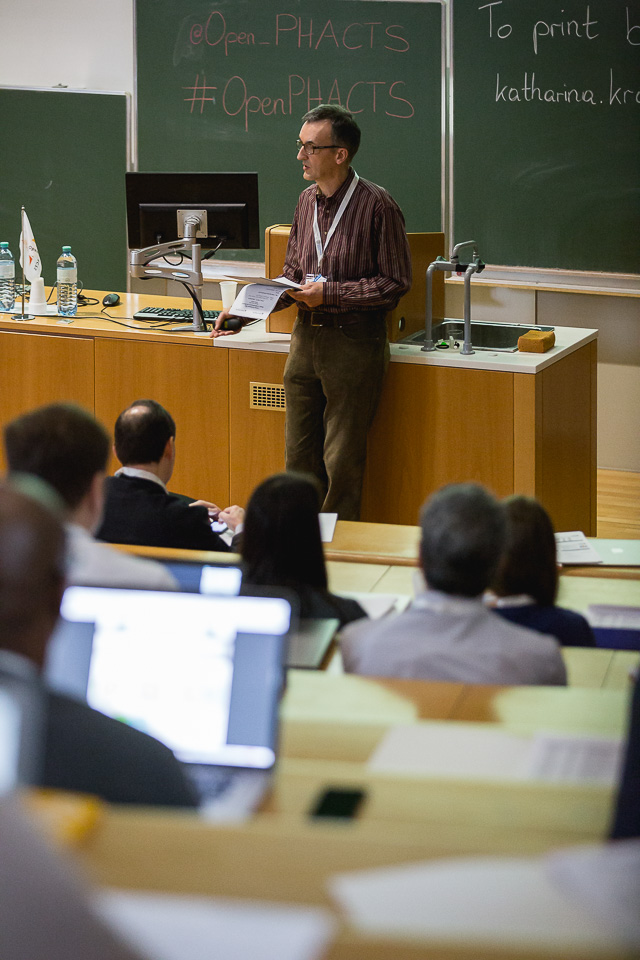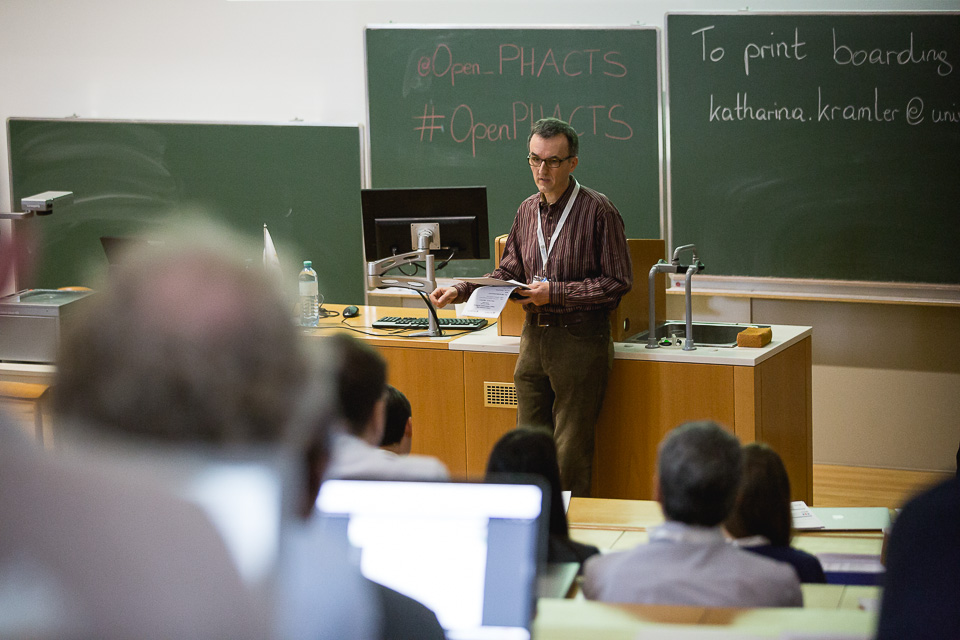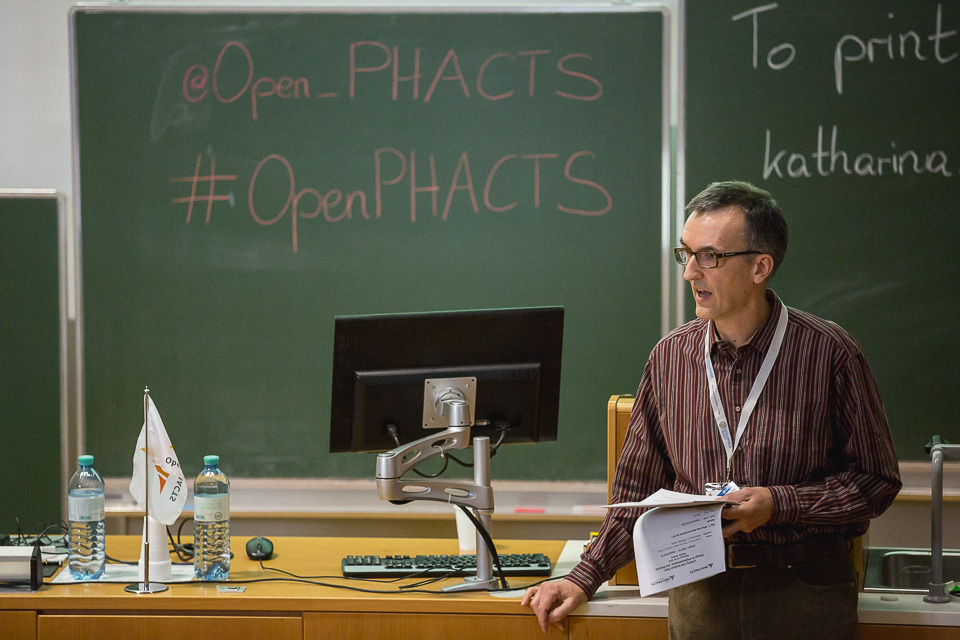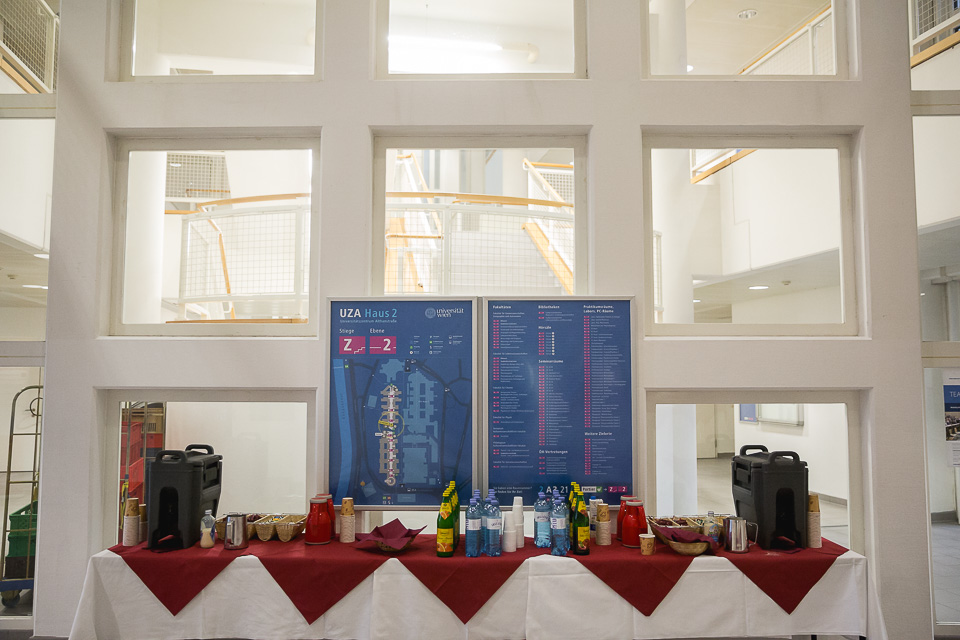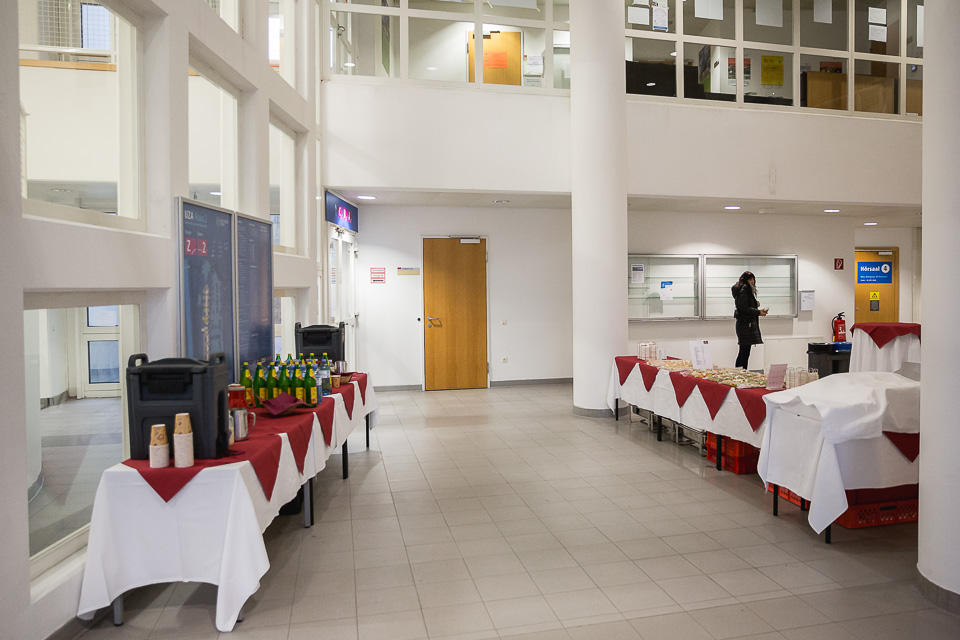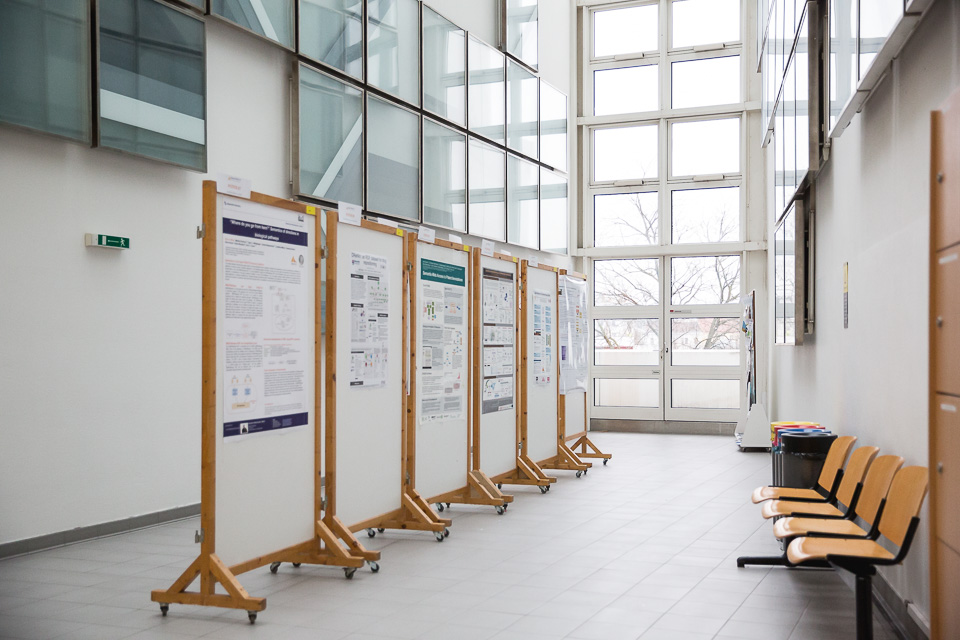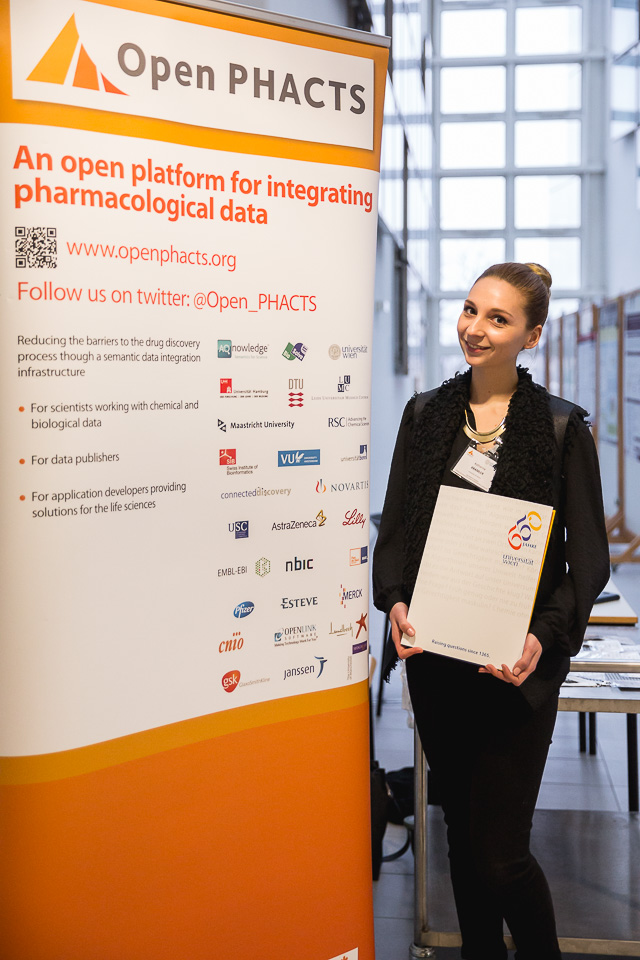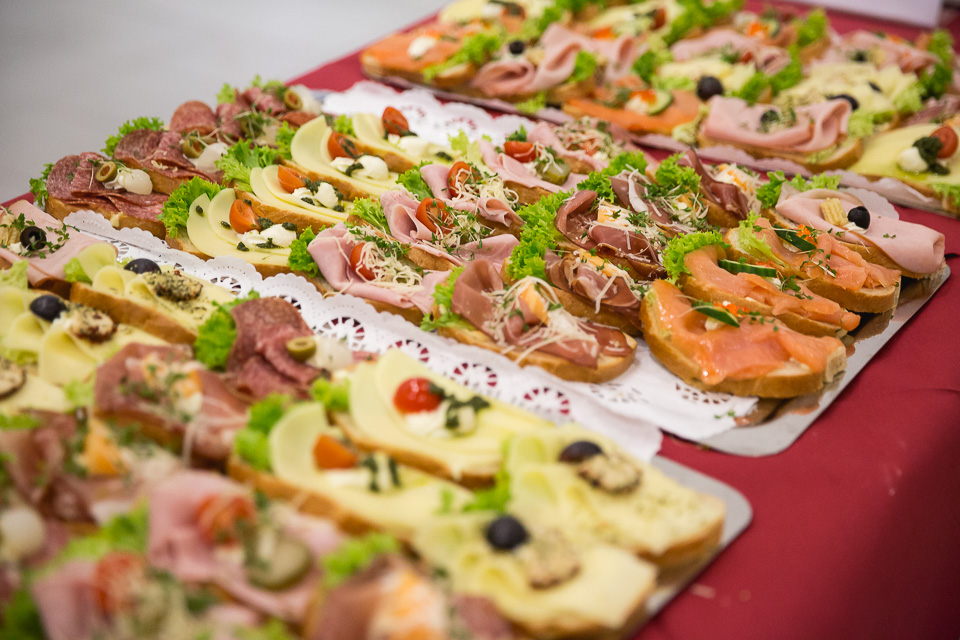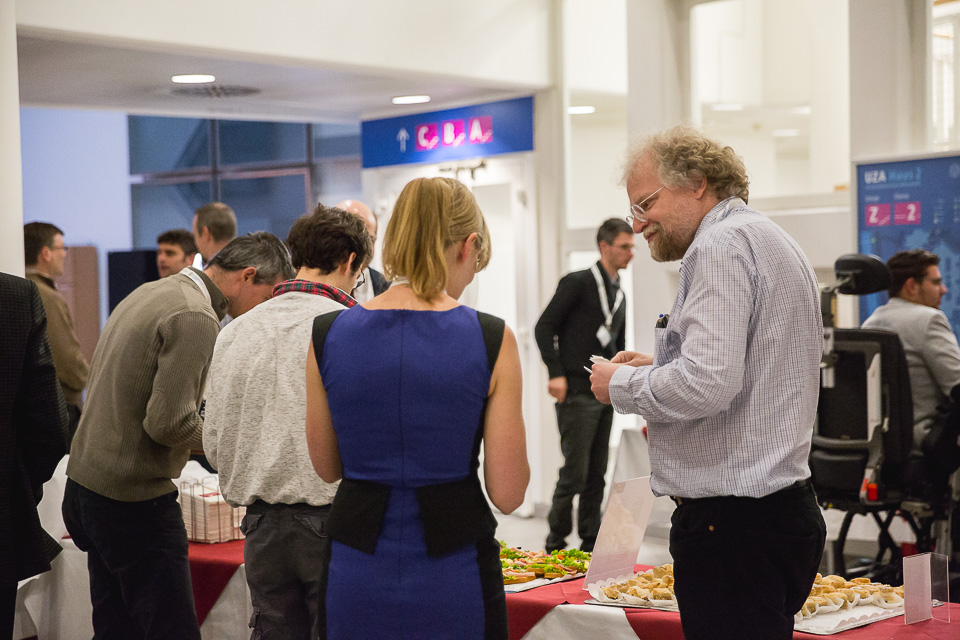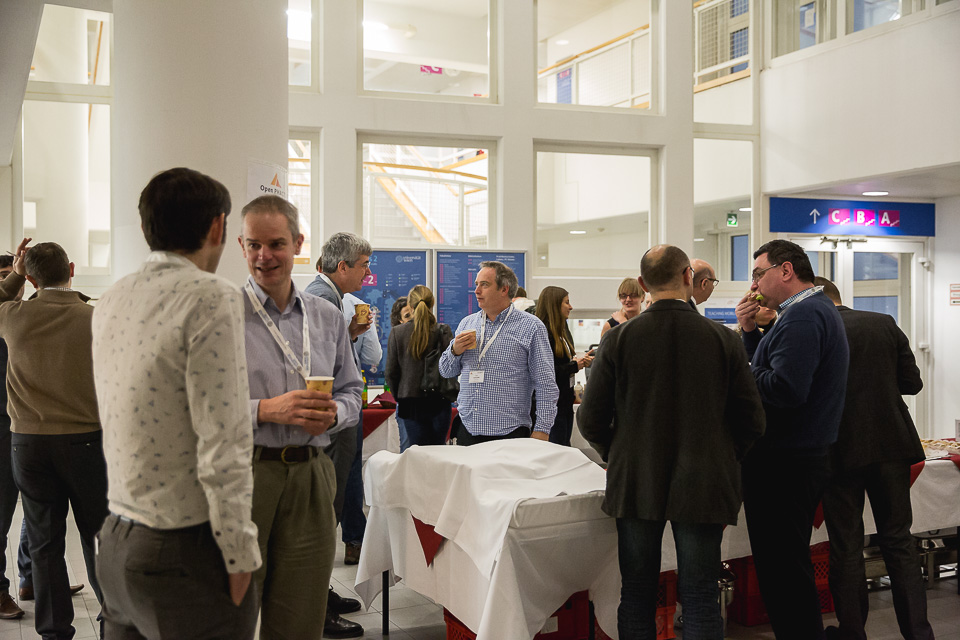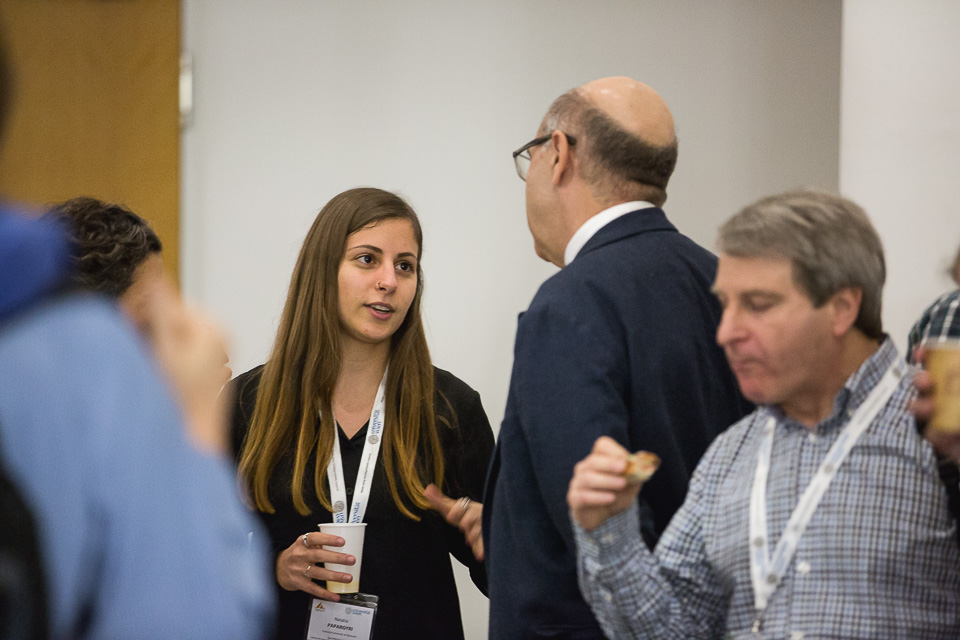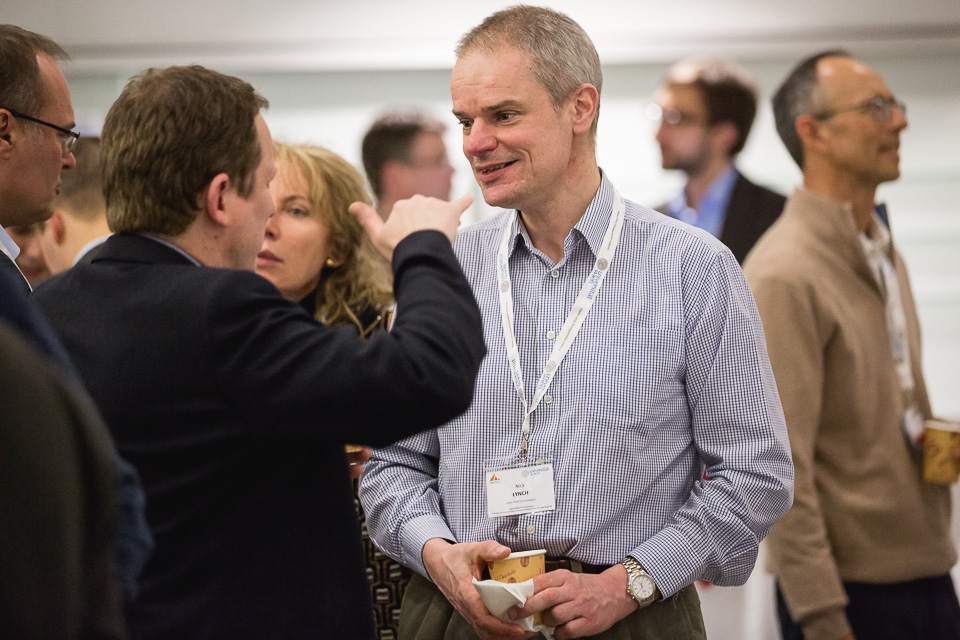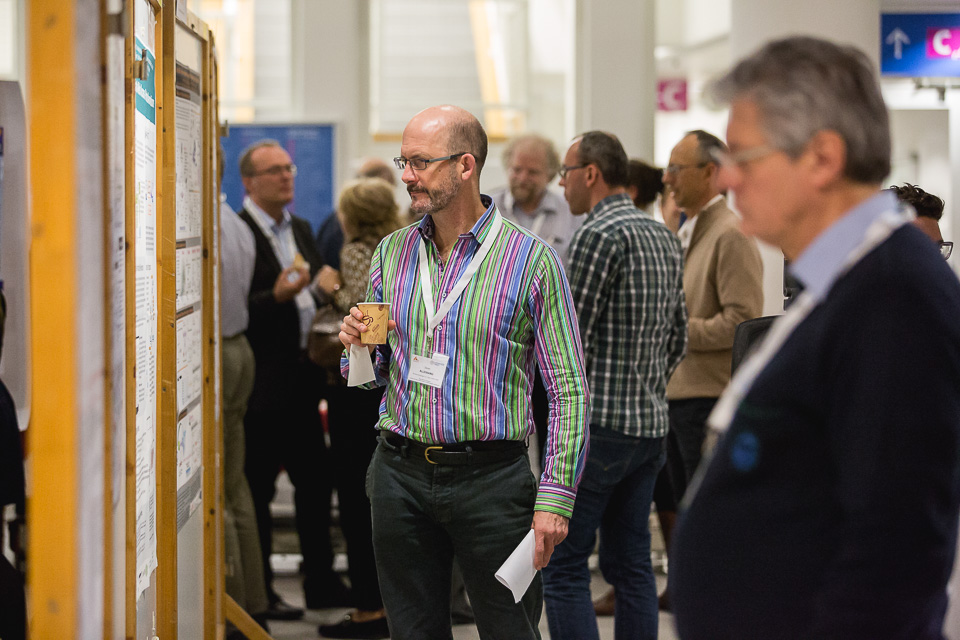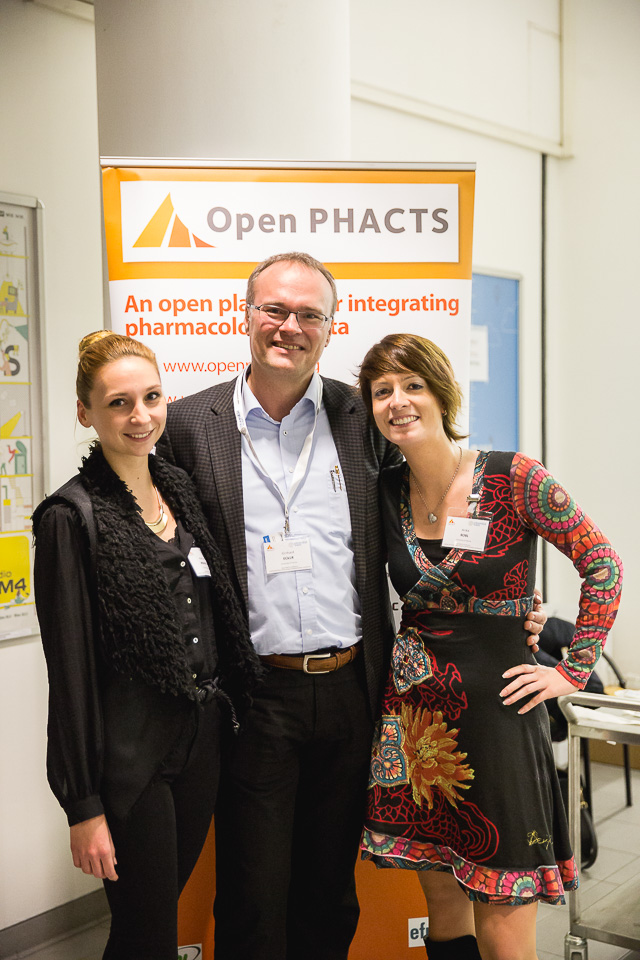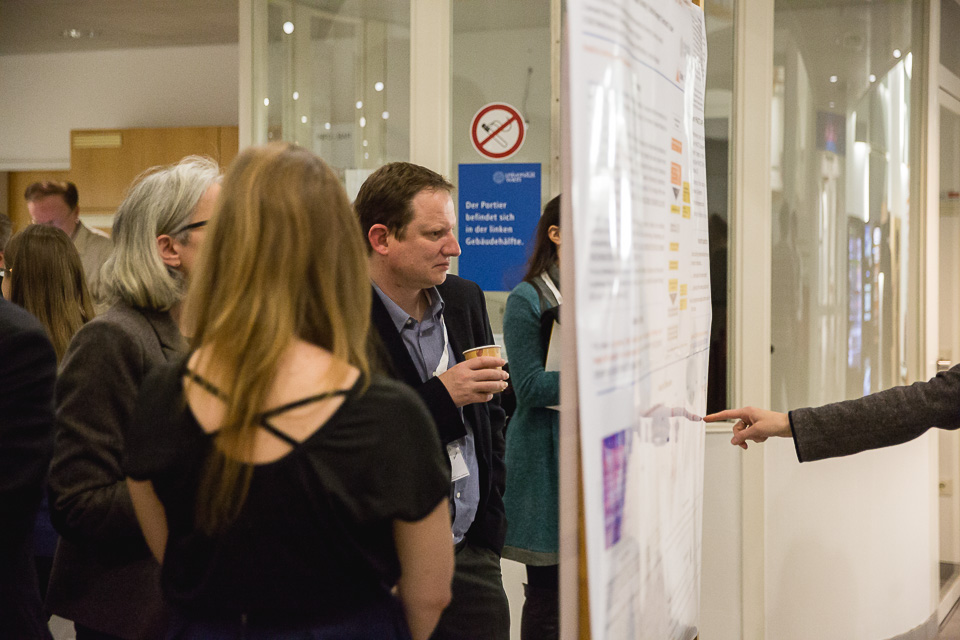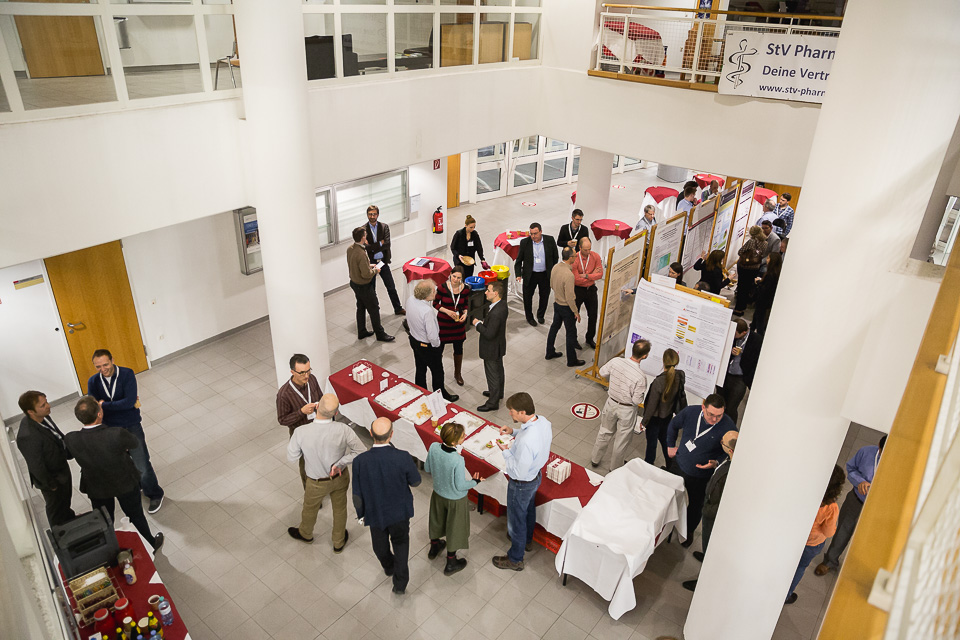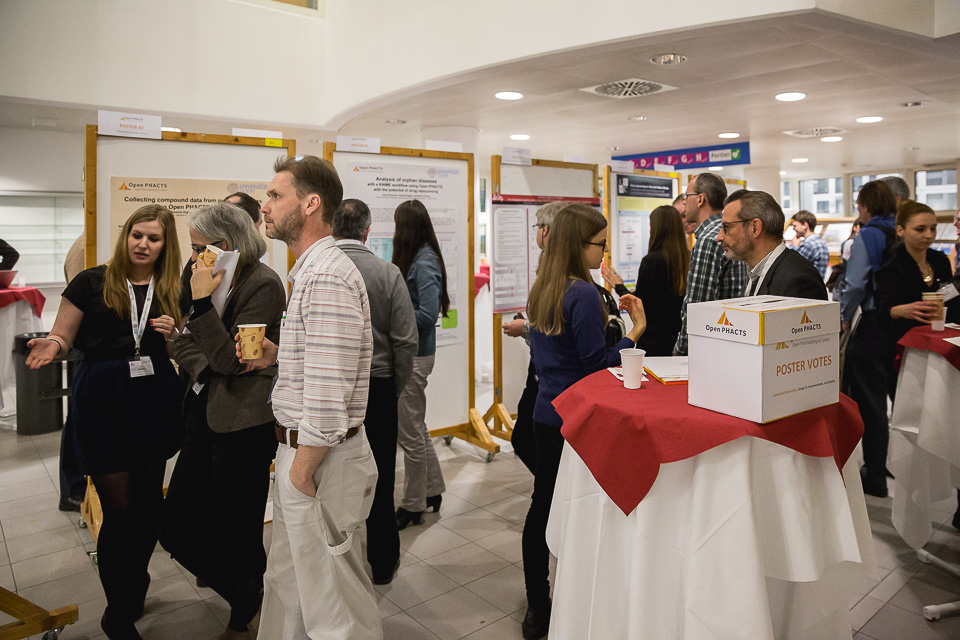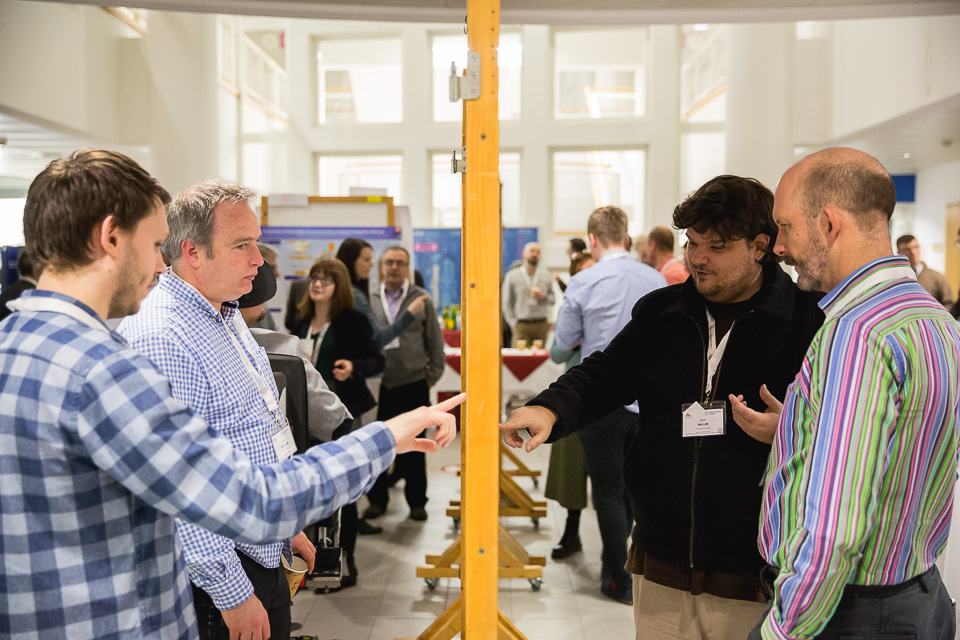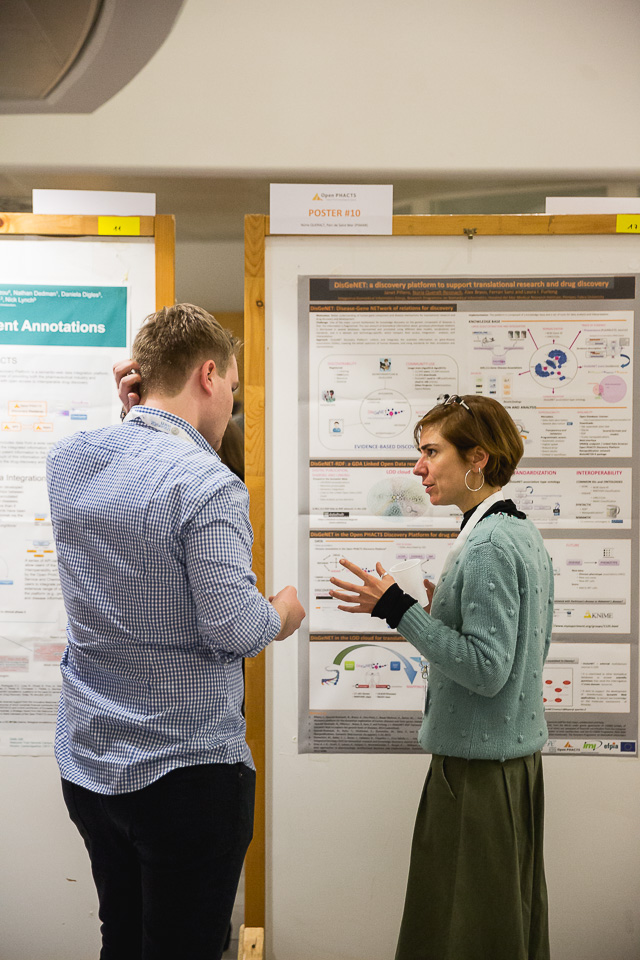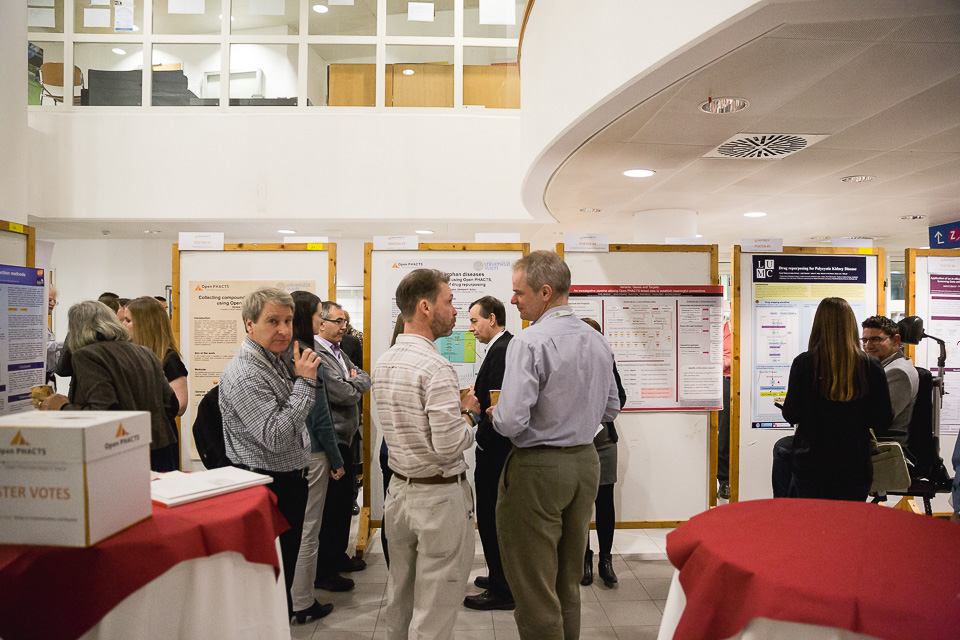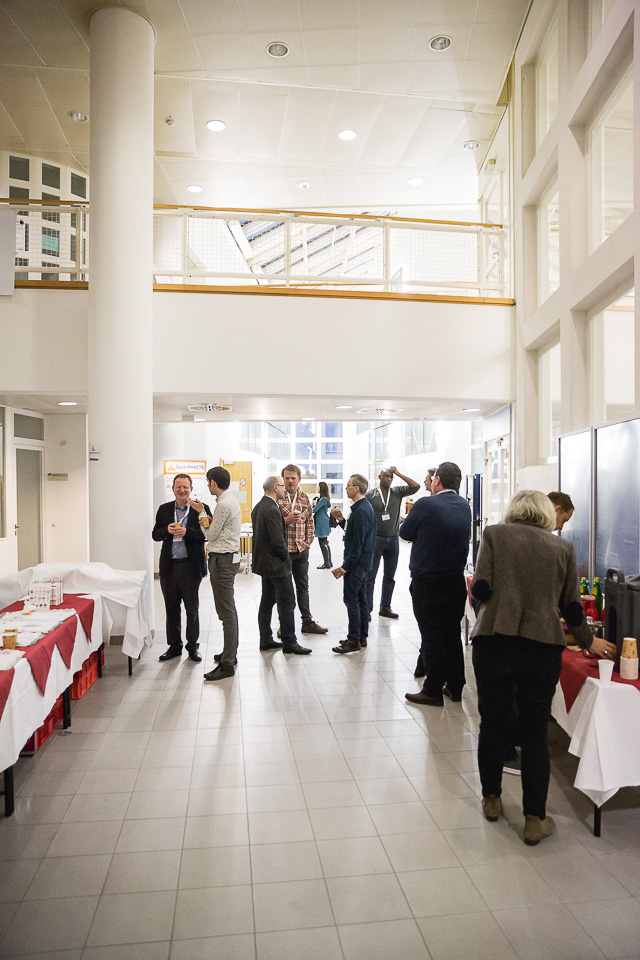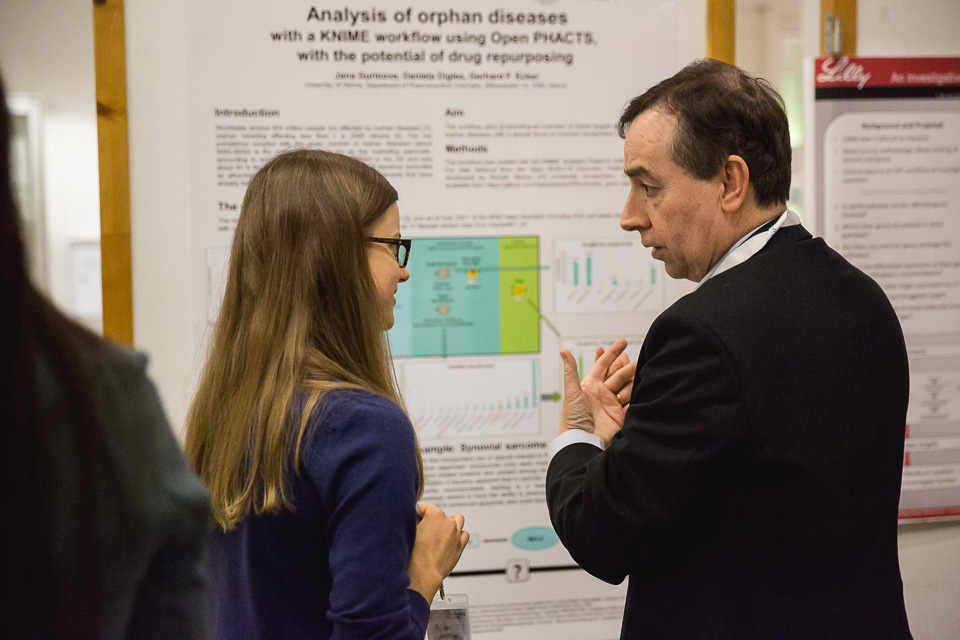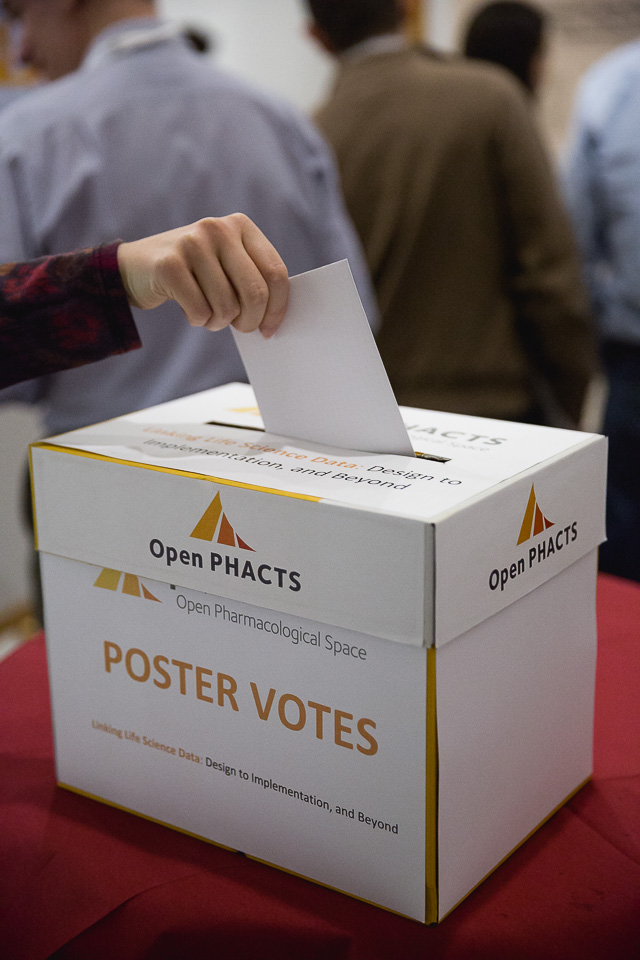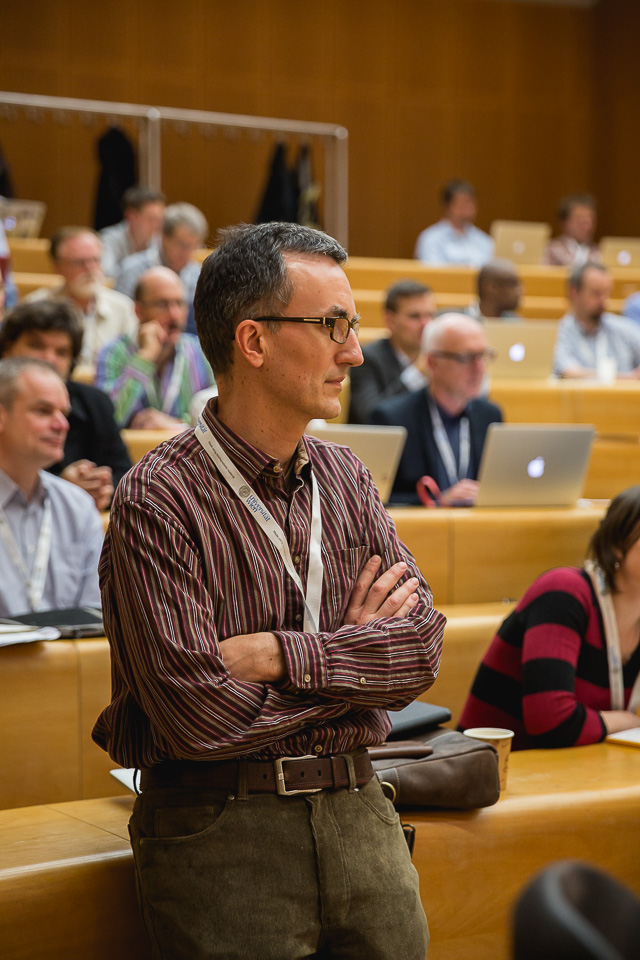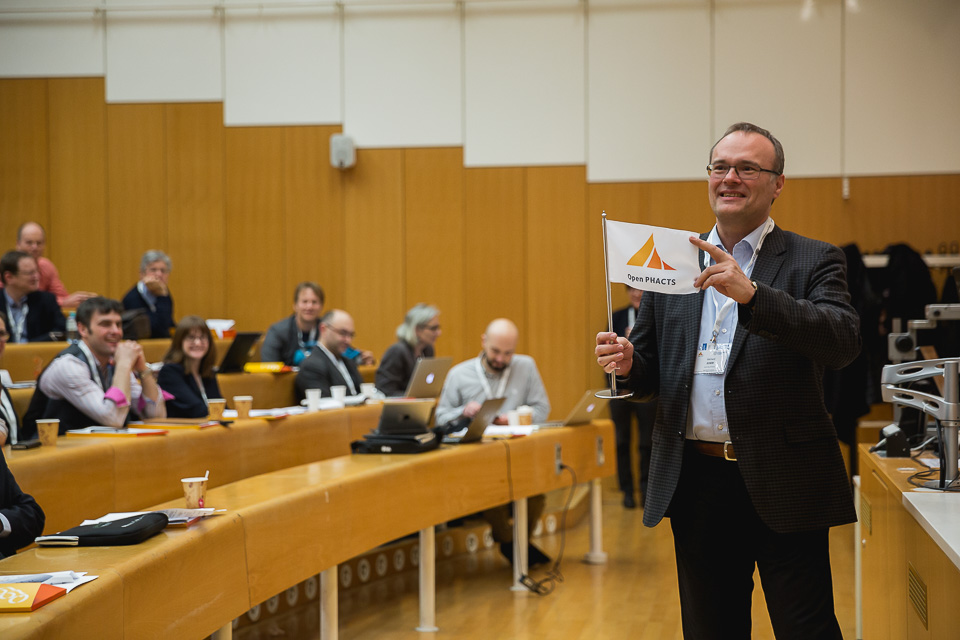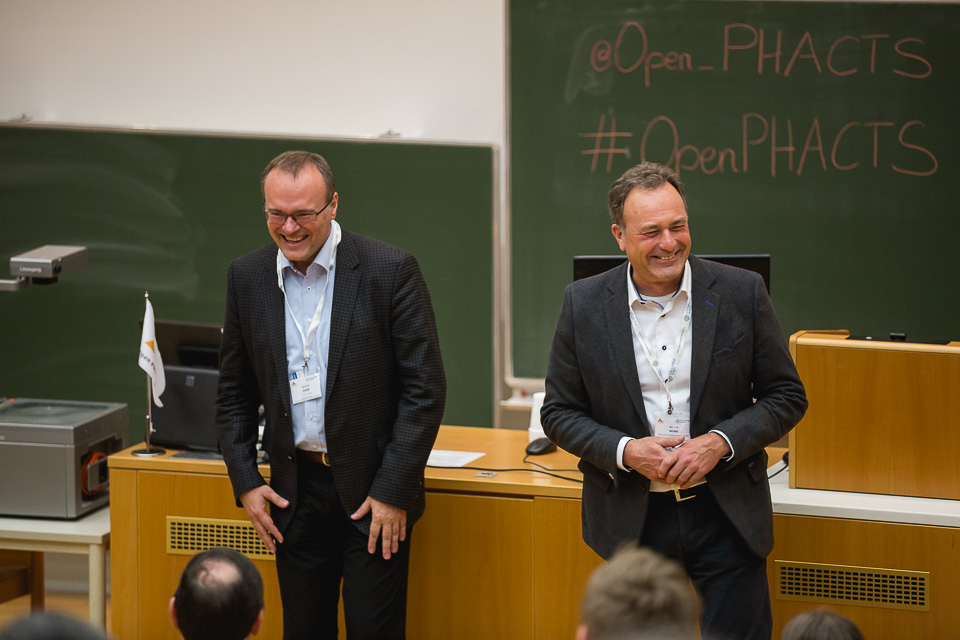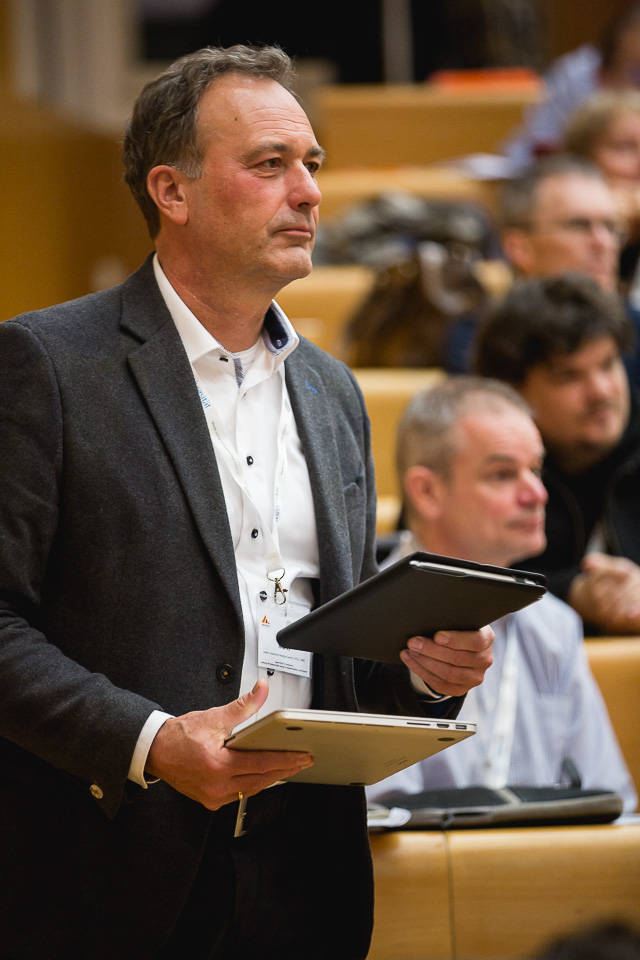
Linking Life Science Data: Design to Implementation, and Beyond
Open PHACTS project closing conference (Vienna, Austria)
On 18–19 February, 2016, we celebrated the completion of the Open PHACTS project with a conference at the University of Vienna, Austria. A total of 79 people attended to discuss the achievements of the Open PHACTS project, what they mean for the future of linked data, and how they can be carried forward.
After a brief welcome from our hosts, Pierre Meulien and Theo Meert began Day 1 with a discussion about the growing importance of collaborations like IMI. Stefan Senger and Gerhard Ecker went on to cover the “real story” of Open PHACTS, and Barend Mons and Ferran Sanz presented their views on how much has changed over the last five years. Several project representatives contributed their thoughts on the role Open PHACTS has played in paving the way for other past, ongoing, and future projects.
After lunch we turned to more practical matters, with presentations on the key deliverable of the Open PHACTS project: the Open PHACTS Discovery Platform itself. These were followed by a series of shorter talks demonstrating various ways the platform can be used.
A poster competition for early career researchers continued the theme of using Open PHACTS, with twelve entries each presenting a unique use case for the platform. Congratulations to poster prize winner Emily Jamieson, for her poster demonstrating an Open PHACTS investigative pipeline, and runner-up Luca Bartek, for her investigation of automated and manual patent extraction methods.
We rounded off Day 1 with a ceremony to mark the official end of the Open PHACTS project, with a symbolic flag handed over from project representatives to the current directors of the Open PHACTS Foundation.
Day 2 began with presentations from Paul Groth and Carole Goble on the future of linked data, followed by contributions from representatives of the pharmaceutical industry on their use of linked data.
We then turned to the all-important question of sustainability of the Open PHACTS project’s outcomes. Dean Allemang described the wider context in which the Open PHACTS Foundation exists, and Nick Lynch explained several options for and benefits to working with the Foundation.
After lunch, Lee Harland’s engaging keynote highlighted five key challenges to the future of linked data, setting the scene for an open discussion about how Open PHACTS and others might meet these challenges. As this discussion drew to a close, Stefan Senger proposed ways in which people can stay involved with the Open PHACTS Foundation now that the project is over.
We would like to thank everyone who attended the conference, and especially everyone who has contributed to the Open PHACTS project over the last five years, for their contributions and hard work.
Conference photos (© Samuel Erik Colombo | Optical Engineers)
Conference background and outline
Storify round-up of Twitter conversations
Presentations
Day 1: What has been achieved so far?
How to succeed in public-private partnerships
- The role of public-private partnerships in accelerating the development of innovative medicines (Pierre Meulien, Director, Innovative Medicines Initiative)
- Open PHACTS, an example of a public-private partnership delivering for industry (Theo Meert, Janssen Pharmaceutica & EFPIA InnoMedS Group)
- The story of Open PHACTS (Gerhard Ecker, University of Vienna, and Stefan Senger, GlaxoSmithKline)
Changes in the life sciences landscape
- From Open PHACTS to Open Science and Back (Barend Mons, LUMC)
- The influence of Open PHACTS on other IMI and EU projects (Ferran Sanz, PSMAR)
The platform today
- Open PHACTS: the platform today (Nick Lynch, Open PHACTS Foundation)
- Open PHACTS: The Data Today (Alasdair Gray, Heriot-Watt University)
- Enabling linked data in Open PHACTS (Hugh Williams, OpenLink Software)
Using Open PHACTS
- Using Open PHACTS with KNIME (Daniela Digles, University of Vienna)
- Accuracy of drug-related information on Wikipedia (Luca Bartek, University of Strathclyde)
- Open PHACTS computational protocols for in silico target validation (Edgar Jacoby, Janssen Pharmaceutica)
- Chem3 to search SAR space… and much more (Jean-Marc Neefs, Janssen Pharmaceutica)
- Leveraging annotated SureChEMBL patent data with the Open PHACTS API (George Papadatos, EMBL-EBI)
Poster competition
- Poster introductory slides
- Runner-up: Comparison of automated and manual patent chemistry extraction methods (Luca Bartek, University of Strathclyde)
- Collecting compound data from public databases using Open PHACTS and KNIME (Daniela Digles, University of Vienna)
- Analysis of orphan diseases with a KNIME workflow using Open PHACTS, with the potential of drug repurposing (Jana Gurinova, University of Vienna)
- Winner: Variants, genes, and targets: An investigative pipeline utilising Open PHACTS linked data to establish meaningful connections (Emily Jamieson, Glasgow University)
- Drug repurposing for Polycystic Kidney Disease (Tareq Malas, LUMC)
- Application of an in silico mechanism-of-action protocol to high-content cytotoxicity screening data utilizing WikiPathway data extracted from Open PHACTS (Lewis Mervin, University of Cambridge)
- “Where do you go from here” Semantics of directions in biological pathways (Ryan Miller, Maastricht University)
- DReNIn: An RDF dataset for drug repositioning (Joseph Mullen, University of Newcastle upon Tyne)
- Semantic-web access to patent annotations (George Papadatos, EMBL-EBI)
- DisGeNET: a discovery platform to support translational research and drug discovery (Núria Queralt, PSMAR)
- Linking the Open Phenotypic Drug Discovery Resource (OPDDR) (Jeremy Yang, Indiana University)
- Using linked open data for assessing multi-target SAR (Barbara Zdrazil, University of Vienna)
Day 2: Where do we go from here?
The future of linked data
- The future of linked data in an open world (Paul Groth, Elsevier)
- Linked data: the ELIXIR of life science data (Carole Goble, University of Manchester)
How big pharma is using linked data
- The Open Phenotypic Drug Discovery Resource (OPDDR) (Jeremy Yang, Indiana University)
- Detail vs the bigger picture (Derek Marren, Eli Lilly and Company)
- SureChEMBL use case example (Stefan Senger, GlaxoSmithKline)
- Open PHACTS impact at Janssen (Herman van Vlijmen, Janssen Pharmaceutica)
The role of the Open PHACTS Foundation
- Beyond Open PHACTS (Dean Allemang, Working Ontologist, LLC)
- Engaging with the Open PHACTS Foundation (Nick Lynch, Open PHACTS Foundation)
Keynote: What challenges still need to be met?
- Linked Data: The challanges ahead (Lee Harland, SciBite Limited)
